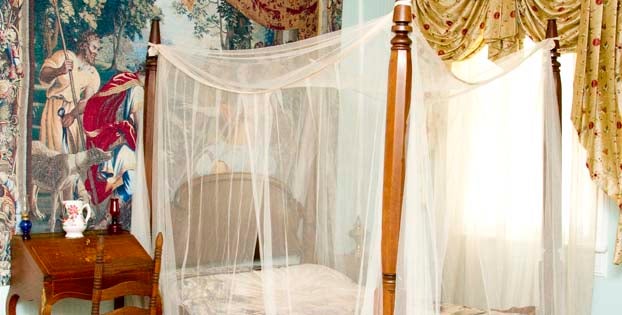1811 Kid Ory Historic House puts LaPlace at center of historical events
Published 12:00 am Wednesday, February 3, 2021
|
Getting your Trinity Audio player ready...
|
LAPLACE — The 1811 Kid Ory Historic House, formerly known as the Woodland Plantation or Montegut House, opened to the public for the first time in its more than 200-year history on Feb. 2, 2021.
St. John the Baptist Parish’s newest museum features exhibits on the 1811 German Coast Uprising of enslaved people and the life of jazz pioneer Kid Ory, who was born on the plantation grounds in 1886.
The 1811 Kid Ory Historic House is located at 1128 Highway 628. History practitioner Charlotte Jones will lead tours hourly from 10 a.m. to 3 p.m. Admission is $15, and masks are required while inside of the building.
“This is the first time we’ve had a resource like this right in the heart of LaPlace,” Jones said. “I find the history fascinating here because the Woodland Plantation was the genesis of LaPlace today and its subdivision in 1923. The stories that we are telling now are stories that we’ve known of, but they haven’t been told in this form before.”
Managing Director John McCusker said the most recent owner of the 4,000 square foot structure did a magnificent renovation of the house to restore it to what it looked like when the Ory family resided there in the early 1900s.
The plantation grounds originally spanned 1,800 acres, encompassing most of present-day LaPlace from I-10 to the Mississippi River.
“People have never gotten to see this home, and it has some very important history,” McCusker said, adding the two permanent exhibits show contrasting sides of the human experience.
“Here we’ve got the largest slave uprising in American history and the dawn of jazz happening on the same grounds,” he said. “You’ve got 1811, which tells us the worst thing about what happens when people treat other people badly. Then with Kid Ory, we have a story about the good things we like to think about ourselves, that we’re inventive and we create things and we’re improvisational.”
While most interpretations of history focus on technology and advancement, McCusker notes that one constant is human behavior. Throughout all of human history, people have chased dreams.
“We really try to bring out and stress people’s humanity. Kid Ory could have spent his life cutting sugarcane, but he wanted something more,” McCusker said. “Particularly for our African American visitors, I want them to come and walk in the footsteps of their ancestors and see that their ancestors fought back in their own way, not just with 1811, but with slow walk tasks, every tool that showed up broken. Resistance took many, many forms.”
A room in the oldest part of the house includes authentic period furniture to bring to life what the house might have looked like the night the enslaved people killed the plantation owner’s son, Gilbert Andry, and broke free of the plantation grounds.
The room includes a Napoleonic era sword, a reproduction painting of Gilbert Andry and a list of the enslaved who participated in the German Coast Uprising.
On the opposite side of the house, the Kid Ory exhibit walks visitors through Ory’s life, from his upbringing in the Woodland Quarters to his New Orleans band that nourished the talents of Louis Armstrong, King Oliver and other jazz pioneers.
Patrons can listen to Ory’s jazz collection and explore his legacy on vinyl, CD and 78rpm recordings as well as books, handmade string instruments, vintage phonographs, cards, photos and art.
A separate exhibit room at the 1811 Kid Ory Historic House includes “Stomping Grounds: Mules at Work in Southeast Louisiana,” which explores the role of draft animals and regional sugar production after the Civil War. Patrons can also browse photographs of regional culture, including the Mardi Gras Indians and the last of the Louis Armstrong generation of jazz musicians.
McCusker is interested in talking to anyone who lived on the grounds of the historic house when it was a sugar cane plantation. He is also seeking old photos of the Woodland Quarters.
For more information, visit 1811kidoryhistorichouse.com.






